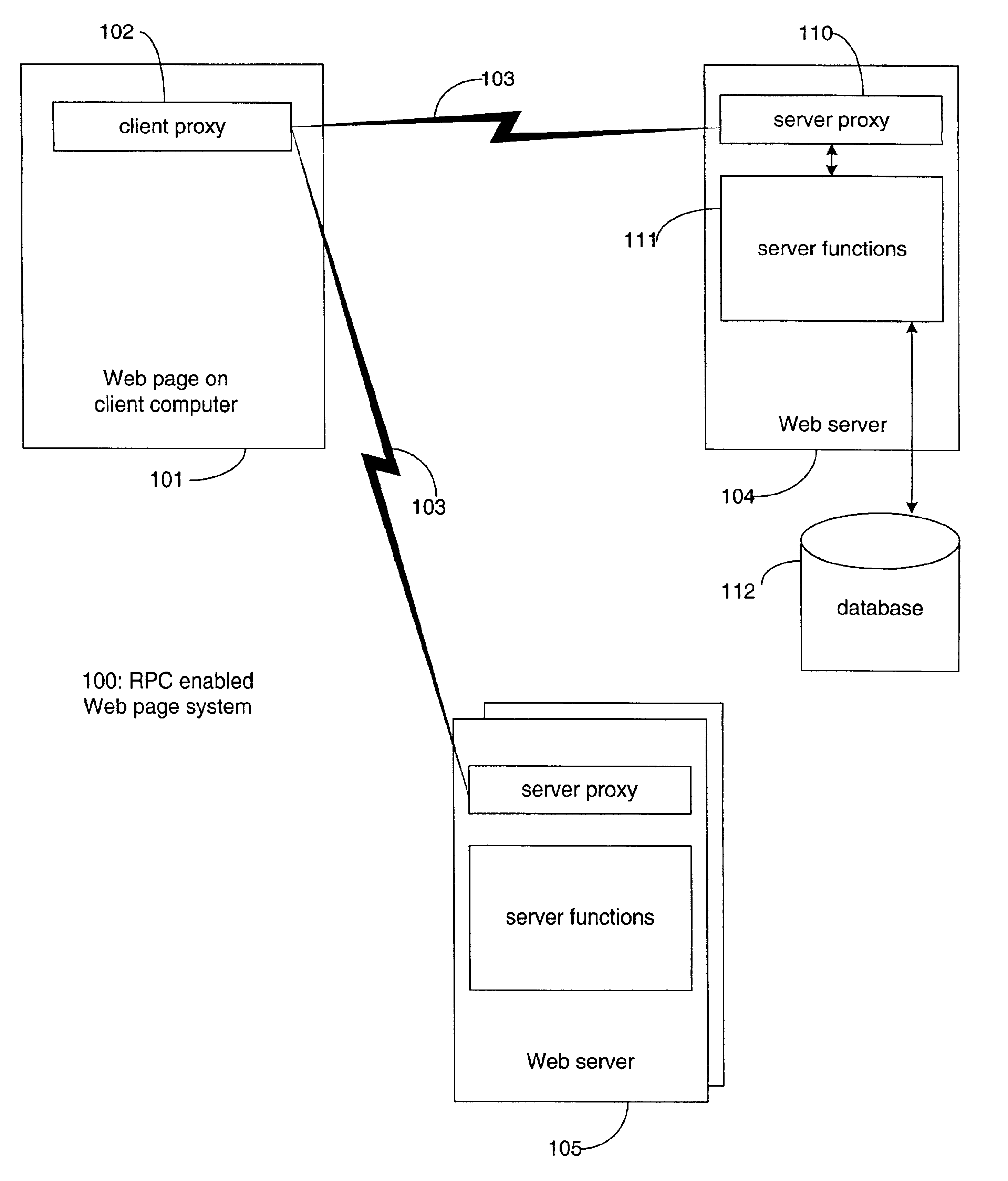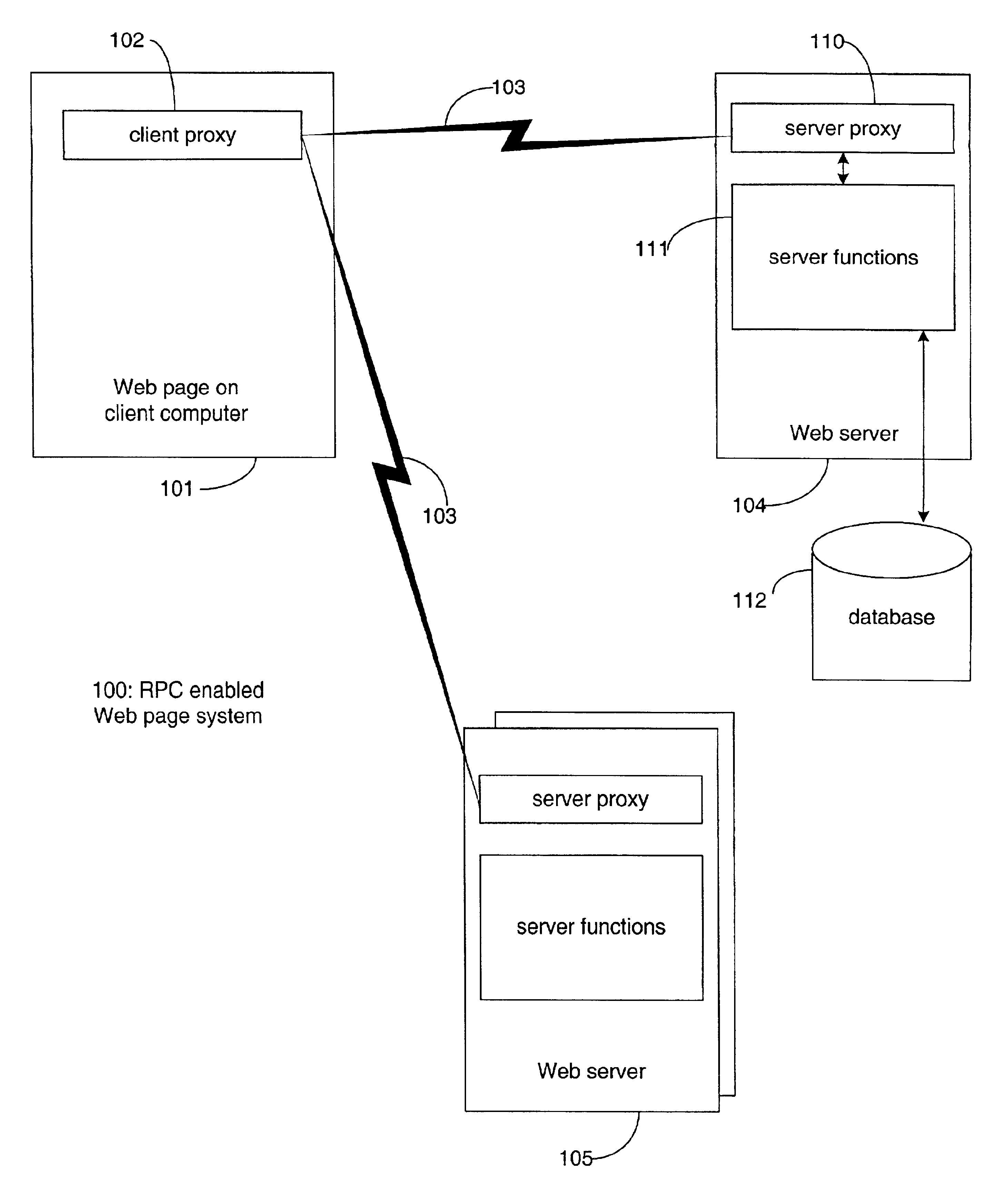Method of <script> based remote JavaScript function call of web page
a remote javascript and function technology, applied in the field of methods, can solve the problems of increasing the delay in downloading web pages, affecting the browsing experience of internet users, and high traffic that overloads web servers,
- Summary
- Abstract
- Description
- Claims
- Application Information
AI Technical Summary
Benefits of technology
Problems solved by technology
Method used
Image
Examples
Embodiment Construction
[0025]Typically, a Web page communicates back to the server when the user clicks the submit button on an HTML form. Once the submit button has been clicked, the browser takes the values from the form fields, builds an HTTP request, and then sends that to the server. The server receives the information, does what it needs to do—querying a database, for example—and then returns some data, usually in the form of a new HTML page. Although this method for data transmission is highly inefficient, because HTTP is a connectionless protocol that reduces the consumption of server resources, this method is still in use today.
[0026]Microsoft Java Applet based Remote Scripting, Netgratus and based Remote Scripting and this invention, based Remote Scripting, are all built on top of the HTTP; it uses HTTP requests to the server over the HTTP port (usually port 80), which simplifies firewall negotiation. Rather than relying on the user clicking on a submit button, all methods of Remote Scripting...
PUM
 Login to View More
Login to View More Abstract
Description
Claims
Application Information
 Login to View More
Login to View More - R&D
- Intellectual Property
- Life Sciences
- Materials
- Tech Scout
- Unparalleled Data Quality
- Higher Quality Content
- 60% Fewer Hallucinations
Browse by: Latest US Patents, China's latest patents, Technical Efficacy Thesaurus, Application Domain, Technology Topic, Popular Technical Reports.
© 2025 PatSnap. All rights reserved.Legal|Privacy policy|Modern Slavery Act Transparency Statement|Sitemap|About US| Contact US: help@patsnap.com


